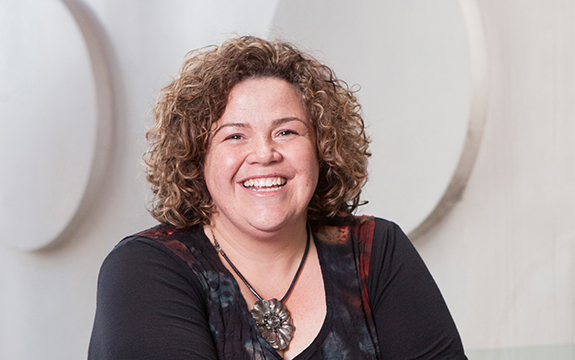'The excitement is in that enabling of people to connect'

In Summary
- Swinburne Innovation Precinct director shares her insight into innovation fuelled by research
- 'I want Swinburne to be the go-to place for exciting ideas to become reality and I want to support those who have the ideas by surrounding them with the right people.'
Fundamental research unlocks our understanding of the world around us, pushing the boundaries of possibility – but it is not until research connects with innovation and implementation that true social and economic impact can be achieved. Swinburne Innovation Precinct director Professor Sally McArthur shares her thoughts on the importance of research-led innovation
“I am a biomedical and materials engineer and often the joy of being an engineer is that we are at the coalface of translating our research. I came into this field because I was fascinated by how humans interact with the built environment and how we could improve people’s lives by implanting different things in their bodies. So I’ve done a lot of work in contact lens research and then deeper into understanding the fundamentals of what happens when you put artificial materials in human bodies, which has impact across a whole wide range of things.
“I want to see the work that I am doing actually be able to be used by people, to improve industry, and to make it more competitive. I want to explore ways that my knowledge can be used in different platforms and applications to build up new concepts and to collaborate on larger opportunities.
“I want to make stuff.
“I started my research career and completed my PhD at CSIRO working on a big industry project. It showed me what it took to actually take a fundamental piece of science all the way through to a product, and that has stayed with me my entire career. It wasn’t that my research was intimately linked to the final product, but that I was part of a community building up the underpinning knowledge to be used in the space.
“There is always going to be enormous scope for fundamental research. However, if we aren’t in the marketplace trying to translate our research into products and services, then we don’t understand where the challenges lie, and can’t then go back and use that knowledge to inform our research.
“It’s part of a continuum. It’s not an either-or.
“Innovation at Swinburne is about doing things differently. It’s connecting our smarts, our knowledge, and our knowhow to the problems and the opportunities that exist. It’s recognising that the people who hold the knowledge, or who do the fundamental research, aren’t always the only people to understand how to apply it in a specific setting, or how to engage a community in identifying what they actually need.
“That’s where our Innovation Precinct can step in: to bring in industry partners and mentors to explore whether there is an opportunity, to see if there’s a market, and to find out what problem can be solved. For me, the excitement is in that enabling of people to connect. I love the idea of joining the dots around this space, of bringing the right people together to identify and solve challenges.
“We are not doing innovation in isolation. It always comes back to that concept of research-led innovation. It is intimately connected to who we are as a university of science, technology, and innovation. There are a lot of places dedicated to working on innovative solutions to problems, but for us, it is about drawing on all of our knowledge as a university under the three pillars of digital innovation, design innovation, and manufacturing innovation. It is how these things can come together to deliver social and economic impact that will be our true measure of success.
“I want Swinburne to be the go-to place for exciting ideas to become reality and I want to support those who have the ideas by surrounding them with the right people. It might be that the idea adapts, or changes completely. It might be that it doesn’t work the first time, or the second. But that we learn and keep trying – that is all part of the process.
“That is innovation.”

